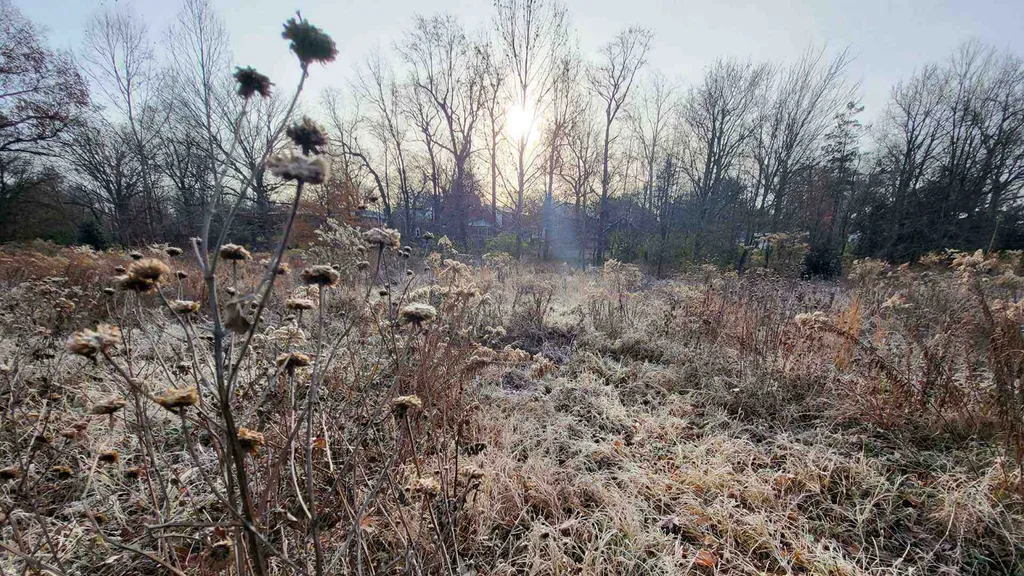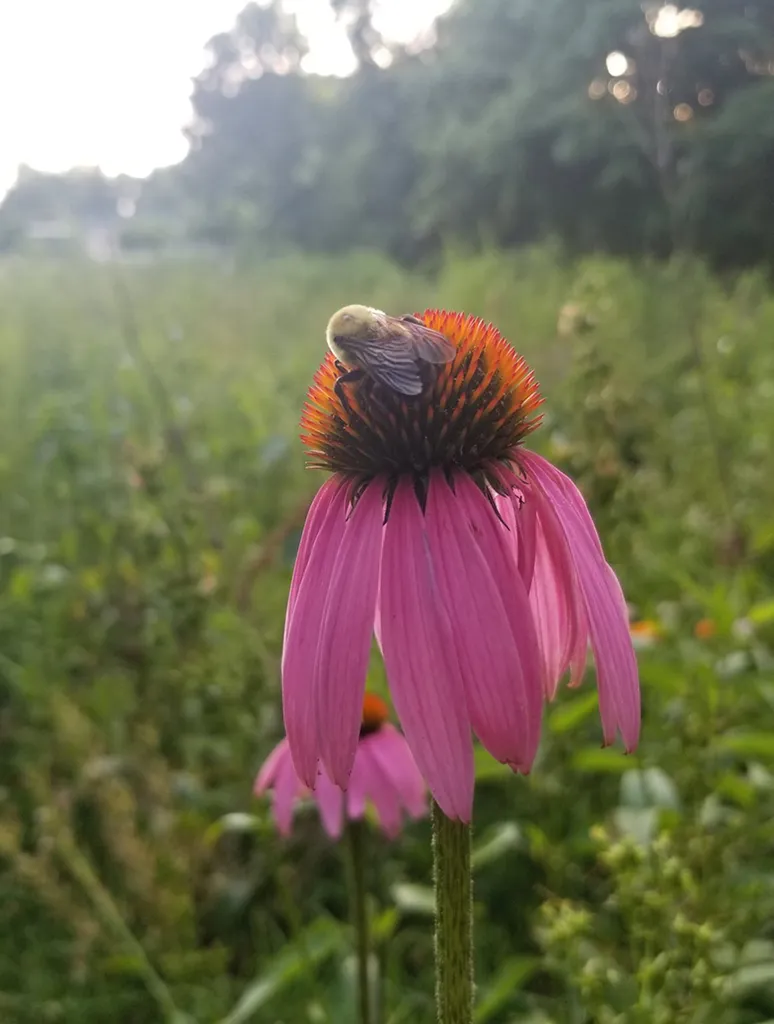- April 06, 2023
- By Maggie Haslam
Along a busy stretch of Adelphi Road just south of the University of Maryland sits an unremarkable field, its dormant scrub offering little trace of the six-month, nectar-fueled rager it hosted last year. But by June, the sea of muted brown will again give way to a riot of black-eyed Susans, golden Alexanders and crimson beardtongues—a floral feast for the eyes, and for the bellies of bees, butterflies and other frequent fliers roaming the region.

The University Park Pollinator Meadow is one stop on a growing network of rain gardens, fields, urban forests and roadside planters devised to feed and house some of Maryland’s smallest inhabitants, but which have big impact on its ecosystems and agriculture. A nutrient-rich superhighway of over 30 pollinator sites and counting, the 13-mile Route One Pollinator Corridor is part of an ongoing effort by UMD’s Sustainable Maryland program to guide, support and unite the “greening” efforts of municipalities along Baltimore Avenue in Prince George’s County.
“There are certain things that resonate with people, and bees and butterflies rank high,” said Mike Hunninghake, program manager for Sustainable Maryland, which is run by UMD’s Environmental Finance Center to help local governments across the state jump-start projects that promote vibrant and healthy communities. “We try to capitalize on that to pull them into the conversation, share ideas and inspire them—then they’re on their way.”
At the request of corridor communities including College Park, Laurel and Mount Rainier, center staff leveraged Environmental Protection Agency funding to develop a pollinator action plan in 2022, a comprehensive “how-to” for stitching together existing pollinator work by municipalities and identifying opportunities for expansion and funding.

The action plan offers a robust list of resources and funding opportunities, with guidelines to organize efforts across communities, develop educational and outreach programs and identify potential partners to help with planning, grant writing and technical assistance. A GIS map of pollinator hotspots identified by Hunninghake and staff—who drove up and down Route One scouting potential locations—pinpoints patches of green or underused elements like center medians that could bridge the gap between larger pollinator refuges of native flowering plants.
Loss of habitat, disease, off-kilter blooming seasons and erratic weather created by climate change have wreaked havoc on pollinators. A 2019 UMD roadside vegetation study for Maryland DOT's State Highway Administration indicated the potential for roadside spaces as diverse, abundant pollinator ecosystems. The issue has caught the attention of lawmakers, with several measures on the docket this legislative session to earmark more underused land for pollinator habitats. Municipalities like those in Prince George’s County are following suit, leveraging resources like the pollinator action plan to galvanize city councils and volunteers.
“There is a diverse community of pollinators that live in urban spaces, including many rare and native species,” said Michael Roswell, a postdoctoral associate in UMD’s Department of Entomology. “In order for them to persist, they need food sources and places to nest. Taking spaces that would otherwise be dominated by weeds and managing them more thoughtfully can ensure there will be spaces for pollinators to thrive.”
Since its release last year, the action plan has helped municipalities add new pollinator sites, educational programming and events—such as “no mow” April, family seeding days and College Park’s “I-spy” activity, pollinator bingo. Several municipalities are also working toward Bee City USA certification (as is the university, see sidebar) and have installed insect hotels, critical for rest and reproducing. There has been “cross-pollination” too, with municipalities swapping native plants and participating in shared events.
“Sustainable Maryland really led this collaboration, and it’s great to see other municipalities right in line with what we’re thinking too,” said Mary Sue Twohy, a longtime member of University Park’s Green Team. “Insects and butterflies are borderless. When we think about sustainability, it's in our best interest to think beyond our own communities.”
Providing a safe harbor for the insects who call this area home, she said, is a year-round effort. In the University Park meadow, the bees and butterflies overwintering in the dry stalks will emerge within the next several days to begin a new life cycle.
“Every year we do this, these habitats get stronger and stronger,” she said.
With abundant gardens, flowering trees and sidewalk planters, the University of Maryland is a highlight of the Route One Pollinator Corridor, an ongoing effort supported by several campus organizations including PollinaTerps, a group of UMD students, faculty and staff dedicated to building a bee-friendly campus. This month, Terps are buzzing about the group’s latest move to designate UMD as a certified Bee Campus USA affiliate, a measure that earned the support of UMD’s Student Government Association last week.
